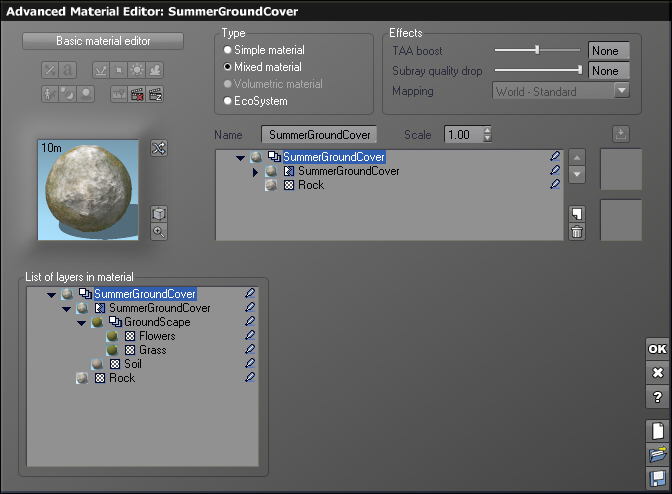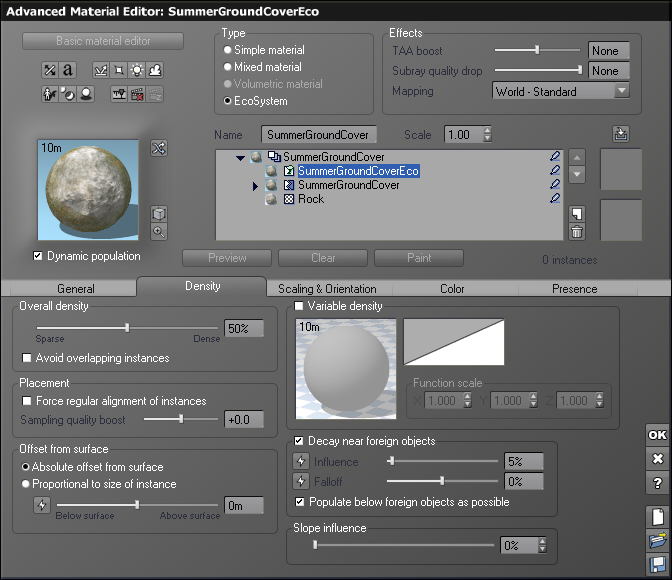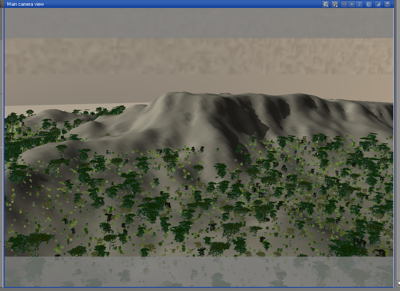So, I’ve been playing with GeoControl2 and Vue to try to make good looking mountains, and today we’re gonna see how it went. Remember though that this was my first encounter with GeoControl2 and I’ve don’t have a massive Vue experience either, only had Vue for less than two months now, but it has kept me pretty busy.
A note on Vue and the modules is in place again. For this demo I’m using the EcoSystem module. It is part of some versions of Vue, but not in the entry versions like Frontier. If you are interested in Vue, there are download links in the side bar for a free version from e-on software.
We had material painted the mountain that we imported from GeoControl2 into Vue. I know that I when I’ve learned more, can get that material information imported too, just have to learn that part. Now we have to assign better materials to the material zones we have made.
You can click the image for a larger view
Here you see the two materials I’ve used, SummerGroundCover and Rock. Rock is a simple material while SummerGroundCover is a complex material defined from severeal other materials. This is how the Vue material system works, it is clever and produce gorgeous results.
Now I switch the SummerGroundCover from a mixed material to an EcoSystem, which is the one key feature that made me love Vue over Bryce. An echo system is a way of placing literally thousands of 3D objects on a surface, trees, grass or even cars on streets.
I add a few trees, some bushes and some grass, setting the Presence of the trees to the lowest, the bushes to middle and grass to high. This way we will have more grass, less bushes and a sparsely spread trees.
You can click the image for a larger view
Now we set the density of the EcoSystem to 50% so it will be a medium dense system. When you make grassy fields or dense forests, you go for 100%.
You can click the image for a larger view
So, how will it look? Before we exit the materials panel, we click Populate to populate the EcoSystem. As this system is rather small, we can do populate. For large or huge systems you should use Dynamic population, that is a really cool thing that populates only areas visible from the camera or areas effecting the final image, like trees casting shadows from behind the camera. Thee is a third option also, EcoPainting, which requires the EcoPainter module. So, this is how the mountain with an ecosystem material looks in the top view.
And here is the camera view from within Vue, with the mountain still selected. You can see the Sky, called Atmospheres in Vue-speak, and to fiddle with them you need another module. You can often use things without extra modules (not EcoSystems though), but to go down and dirty with Atmospheres and materials you do need modules for that, or go for Vue Complete which has all modules plus tons of plants and stuff. There are also two steps beyond that, Vue Infinite and Vue xStream, which have even more things like even better rendering, uses more CPUs and other enhancements, but those are mostly for real professionals.
Here you can see the coverage of the EcoSystem, not in detail but an overview. When I deselected the mountain things looks even more understandable. I also changed the atmosphere to a foggier one.
And, now the big question, how did the final render turn out?
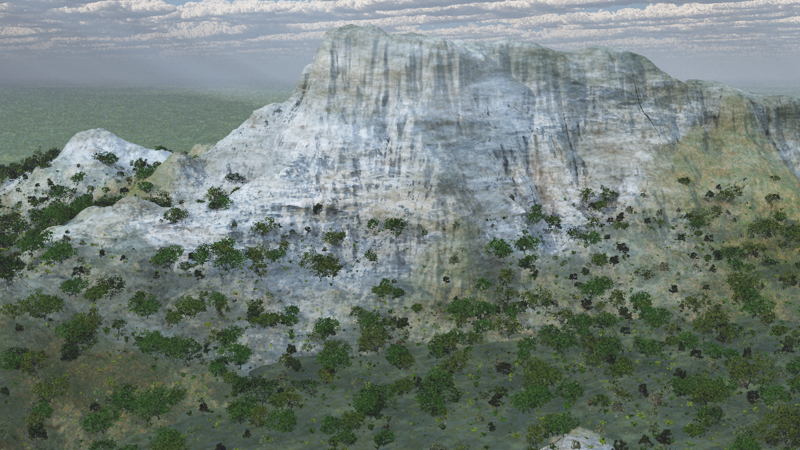 You can click the image for a larger view
You can click the image for a larger view
I must say that for being a first try of GeoControl2 and Vue import, and not spending more than a handful minutes with the material painting, this looks pretty good. It turns out that I really need a picture like this for an adventure that has been in the writing box way too long. My plan is to redo the maps and the pictures for that adventure one day, when I get those eons of free time, and use this technique to make some of the things that have held up the creative process with that adventure, imaging is one.
Comments
Leave a Reply
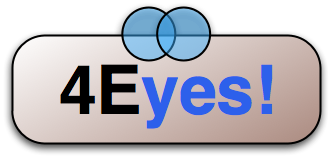 Roleplaying
Roleplaying

